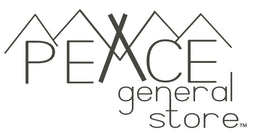
Cool and Unique Indigenous Instruments and Traditions of the First Nations in Canada
Exploring Traditional Instruments of Canada’s First Nations
To celebrate and honour National Indigenous Peoples Day in Canada, we took time to learn about traditional Indigenous instruments and the cultural power, stories, and spirit they carry through sound, music and rhythm.

Traditional Hand Drums
This is probably the most well-known indigenous instrument and they come in various varieties and shapes. Traditionally made with the skin of animals such as deer, moose, caribou, and buffalo, that is stretched on a wooden base. Some believe the hand drums carry the heartbeat of Mother Earth, and their steady rhythm is used to bring people together in song, prayer, and celebration.

Sources : Tachinidrums
Powwows drums
A powwow is a gathering with dances held by many Native American and First Nations communities to socialize, dance, sing, and honor their cultures.

Powwow drums, also called dance drums, are made by First Nations artisans with cedar wood frames and animal hides like deer, elk, or moose. They are then decorated with embellishments like beadwork or other painting such as animals.

At this indigenous cultural celebration, the community and families gather to dance, play music, eat traditional foods and even sometimes hold singing or dancing contests. They come together to honour their culture, practice spiritual healing, and pass traditions to the younger generation.

Water drums
Water drums are different in the fact that the drum chamber is filled with some water to create a unique resonant sound. They are commonly used in various Indigenous cultures across North America, particularly among the Iroquois and Anishinaabe peoples, in both social and ceremonial contexts.

They are mostly made from clay, ceramic or metal, and topped with drum head consisting of a stretched membrane, usually of some type of animal hide.

Rattles and shakers
Rattles or shakers are used to accompany drums and keep the rhythm during tribal dances, powwows, or ceremonies. The earliest rattles known were made from animal hide and attached to a small wooden staff. Today, they are often decorated with beads, feathers, and symbolic designs that reflect the traditions and identity of the maker.

Flute
Flutes are worldwide known, but Indigenous people have been crafting and using them for centuries, with some findings suggesting back as far as 396 BCE.
Indigenous flutes are made of various woods, but cedar is the most commonly used. It would sometimes be played by a man as a courting instrument, as they would craft their own flute and perform for the woman they admired, letting the music speak what words could not.

Healing powers of Indigenous sounds and music
Now that we've explored the different types of instruments, we want to highlight one powerful aspect of these traditions: the healing power of music.
Indigenous healing songs, also called medicine music, hold profound healing potential. They can ease physical and mental pain, energize, calm, soothe, and foster a spiritual connection with oneself.
Some Indigenous communities in Canada hold powwows, and non-Indigenous guests are warmly welcomed to attend. These events aim to promote respect and cultural awareness—you can find upcoming events online: https://canadianpowwows.ca
"If you take care of the drum, the drum will take care of you."
-Brian Knockwood, a founding member of the Eastern Eagle Singers, a powwow drum group formed in the early 1990s.
Source : https://www.cbc.ca/news/canada/new-brunswick/brian-knockwood-wabanaki-drum-maker-1.5391447
Peace to you all,
Copperpeace Team




